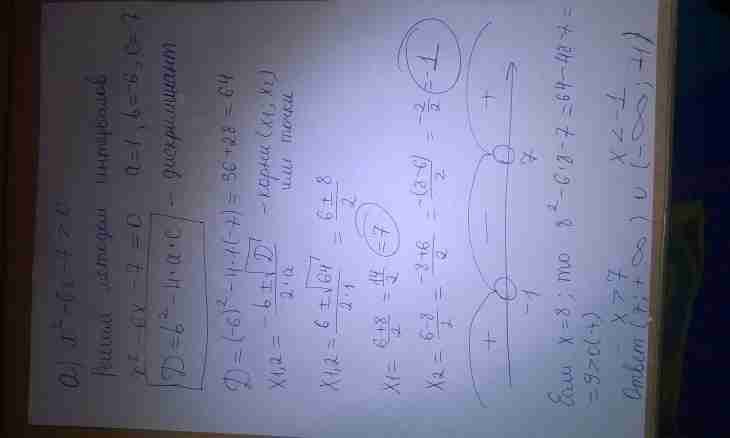Method of intervals - the most important method of the solution of rational inequalities from one variable. Allows to simplify and accelerate considerably the solution of a task and also to issue the decision compactly and concisely.
Instruction
1. Transfer everything to the left part of inequality. On the right there has to be zero.
2. Factorize the left part of inequality (present expression in the form of the work of several brackets). If it is fraction, factorize numerator and a denominator. If it is possible, put a numerical multiplier outside brackets, having simplified thereby expression. This number can be removed from inequality since it does not influence the solution of inequality.
3. Equate each of multipliers to zero. In case of fraction equate to zero each of multipliers in numerator and a denominator. Find all values x at which any of multipliers addresses in zero.
4. Draw a numerical straight line. Note the found points on this straight line. If the denominator multiplier addresses in zero, note it as the pricked-out point (empty circle). You received several intervals on a straight line limited to these points. The extreme intervals limited to a point only on the one hand leave in minus infinity and plus infinity, but they should be considered too. Note intervals arches.
5. Choose any value x. Count value of expression in the left part of inequality at the same time x (more precisely, we are interested not in value of expression, but its sign - plus or minus). Conveniently happens to take x=0. If received positive size, put over an arch in the range of which there is this value x, the sign ""plus"". If received a negative number, put the sign ""minus"" over an arch.
6. Signs over other arches are put by the following rule. If multiplier degree odd, signs alternate. And if even, the sign remains to the same. For example, if you pass through x=1 point, and in expression there is a multiplier (x-1) (a multiplier at the first degree), the sign alternates. And if at expression there is a multiplier (x-2) ^2, then upon transition through x=2 point the sign will remain to the same. Place signs over all arches by this rule.
7. Choose those intervals which satisfy to inequality. For example, if inequality> 0, choose all arches with the sign ""plus"" if <0, choose all arches with the sign ""minus"". In case of such strict inequalities do not include points at which expression in the left part addresses in zero. In case of mild inequalities (it is less or equally to zero, it is more or equally to zero), include such points.
8. Write down the answer.
